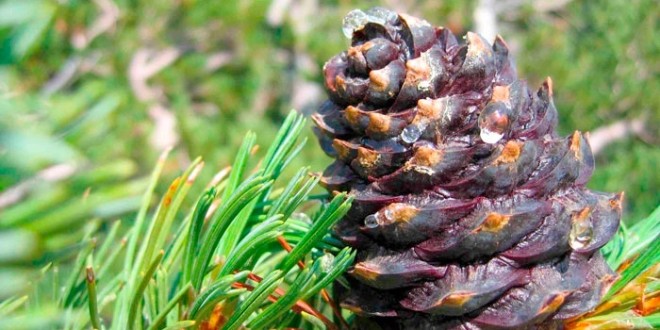The loss of whitebark pine across the Greater Yellowstone Ecosystem has been of great concern to environmentalists, so there’s an effort to restore pine in coming years.
The loss of whitebark pine is a serious issue. The trees, which grow in harsh, high-altitude conditions, provide shelter and food for small mammals and birds. Their pine nuts are a crucial source of food for grizzly bears exiting hibernation in the spring. A 2011 aerial study by the Natural Resources Defense Council estimates that 85 percent of the forests in the Greater Yellowstone Ecosystem are already either wiped out or damaged. Only 5 percent showed no signs of damage.
To counter this loss, a Greater Yellowstone Coordinating Committee (GYCC) has launched a Whitebark Pine Strategy for the Greater Yellowstone Area. The first step: planting 440 “blister rust resistant” seedlings in a five-acre fenced area in the Little Bear drainage southwest of Bozeman. Down the line, planting will take place throughout the region, as explained by Cavan Fitzsimmons, the Hebgen Lake District Ranger, in the West Yellowstone News:
With the assistance of Forest Service regional geneticist cones were collected from trees throughout the GYA that appeared to be resistant to blister rust, an exotic pathogen that’s causing significant mortality among five-needled pines throughout the area. Seeds from the cones were grown in a nursery and then tested using spores of blister rust. The top 30 ranking trees were grafted onto potted rootstock. Replicates of the genetically superior trees planted last week will produce rust resistant seed for restoration and reforestation efforts in about five years.
The seed orchard will be managed by the Gallatin National Forest, but will provide seeds to all the National Forests and National Parks, as well as the Bureau of Land Management (BLM) throughout the GYA. The units include the Gallatin, Custer, Beaverhead-Deerlodge, Shoshone, Caribou-Targhee, and Bridger-Teton National Forests, as well as Yellowstone and Grand Teton National Parks, and the Dillon Field Office of BLM.
One cause of the demise of the whitebark pines has been attributed to global warming: with temperatures above average in the winter, beetles that would normally freeze to death stay alive, feeding on the whitebark pines and causing irreparable damage.
Photo of a whitebark pine nut by Richard Sniezko, courtesy of the U.S. Forest Service.
 Yellowstone Insider Your Complete Guide to America's First National Park
Yellowstone Insider Your Complete Guide to America's First National Park





